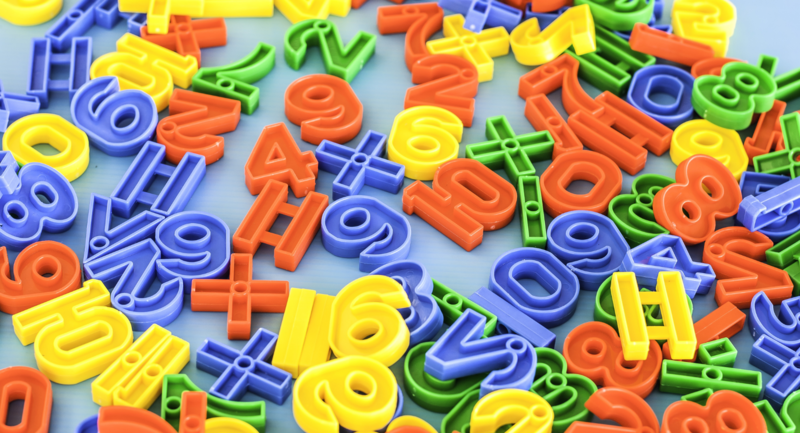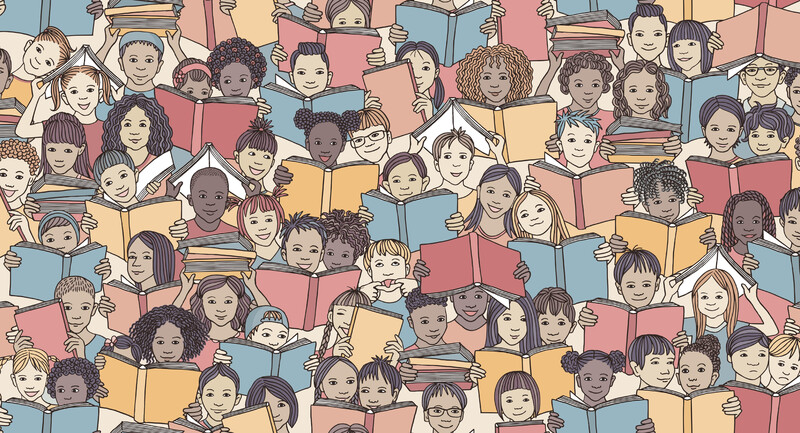When the term STEM gained popularity in the 2000s, being an educator in one of the STEM fields meant making connections across curricular areas and spotlighting post-secondary possibilities. STEM education brought educators together from different subject areas to focus on unifying themes of inquiry and problem-based learning.
But, as STEM was integrated into curriculum standards, especially in subject-specific standards (math, science, and technology), it shifted away from being a novel pedagogical approach and toward one that just focused on single-subject areas. Today, when STEM is defined with this curricular focus, it perpetuates the idea that STEM is simply knowledge connected to the fields and career paths of science, technology, engineering, and math. When STEM is only focused on curriculum, it excludes educators who are not in one of the STEM curricular areas and limits the potential for STEM to be a driving force to transform education that embraces cross-curricular study.
We need to deepen our definition of STEM education and include all disciplines and all educators. In addition to defining STEM through the lenses of science, technology, engineering, and math, we must also define it by sustainability, transferable skills, empathy, and motivation. Prioritizing soft skills enhances STEM education by emphasizing the perspectives and convictions needed to equitably and holistically address local and global problems.
STEM and Sustainability
Sustainability needs to be the throughline in STEM. In the design thinking process, innovative solutions are often products, which require resources—but resources are finite, and acquiring them becomes the source of local and global issues.
For example, the production of new technologies like mobile phones and electric cars requires rare earth elements like dysprosium and neodymium, which are hard to separate from other minerals. The demand for these rare earth elements is projected to increase seven to 26 times over the next 25 years. Many of these rare earth metals are mined with high ecological and health risks to impacted communities, which have fewer environmental regulations and less-regulated working conditions. E-waste recycling can help when some of these rare earth elements can be salvaged, however, most of the e-waste sent from North America is shipped abroad and recycled improperly. Similarly, depending on the location, environmental regulations, and working conditions, e-waste recycling can lead to even greater detrimental impacts on the environment and health of local populations.
STEM is often synonymous with innovation, creating novel solutions to problems, but it must not create new or more severe problems to solve down the line.
STEM is often synonymous with innovation, creating novel solutions to problems, but it must not create new or more severe problems to solve down the line. A “solution” to one problem that creates additional, severe ecological impacts cannot be considered a valid solution. In classrooms, how many times do projects end up in the garbage after they have been evaluated? Sustainability can be integrated into learning products by, for example, repurposing and reusing packaging from cereal boxes or cardboard from online packages instead of using new materials only one time.
STEM and Transferable Skills
Soft skills are STEM skills, as they support learners who will enter a digital world that is more complex, globally-connected, and competitive. Although the focus of these skills or competencies may differ from district to district, they often contain the following: critical thinking, creativity, collaboration, communication, and citizenship. Regardless of learning space or classroom, grade, or subject-area, learners are developing transferable skills as they are learning skills. Although the approach may differ, when educators begin to focus on soft skills, they are actively dismantling silos that educators often find themselves in. Areas of discomfort of one educator can often be the strength of another. Students may begin to see connections between subjects when similar approaches to learning are leveraged. The creative process in the arts, investigations in science, and problem solving in math are all inquiry processes. Although the tools may be different, the iterative nature is consistent.
While knowledge acquisition has become less time-consuming with the emergence of AI, the need for critical thinking has become amplified. Critical thinking skills can help discern if information generated by AI is accurate, goes beyond single narratives or stereotypes, and is culturally responsive and applicable to the audience.
With ongoing technological advancement, the skill of the future is creativity. Humans have the ability to imagine and the emotional competence to dream a vision for the future. Generative AI still relies on prompts and information that is fed into its learning model to produce text, images, and even video. However, generative AI results that are obtained do not contain the emotional connection or context. Educators can encourage creativity in STEM by having students make their learning personal. When someone creates, it is a personal and vulnerable process and must not be must not be reduced to marking off an item on a checklist or rubric. Creativity is not simply producing a work of art, but a personal learning journey.
Collaboration and communication are transferable skills that are essential when working on projects with multiple teams. With the multi-disciplinary nature of STEM, these skills are even more critical as many teams work remotely and across the globe. Proficiency in communication across various formats (written and verbal) and mediums (video, audio, and infographics) is essential, along with an appreciation for the diversity of cultural expression.
Empowering students to develop their own solutions to a problem in their community makes an important difference in how students understand citizenship.
Citizenship can be digital, and can also expand to an understanding of how local and global problems are addressed or solved. Students have citizenship in their school, in their city, and in their country. Empowering students to develop their own solutions to a problem in their community, versus having others come up with a solution, makes an important difference in how students understand citizenship. We can scale this idea, ensuring STEM innovations uplift communities by understanding the causes of local and global problems and recognizing who should be empowered to take action toward solutions.
STEM and Empathy
Empathy is found in many design thinking processes. We teach students to think about the needs of the person for whom the design is created, or to ensure that the problem we’re addressing is worth solving and why. To fully understand the needs of all users, and to ensure missing or underrepresented users are included, cultural competency is necessary in STEM education.
Cultural competency is the ability to work effectively and sensitively across cultural contexts, which includes learning, communicating, and connecting respectfully with others. Culture can refer to social identities such as race, class, gender, religion, disability, or age. To deeply understand the needs of a person, one must examine their own social identities and lived experiences as biases and recognize that unfamiliarity with different social identities may hinder productive conversation or cause harm. In STEM, it is essential to understand how identities, including experiences of privilege and marginalization, shape how we move through this world.
When connecting with others, we must listen to understand, remain conscious of power dynamics, and be aware of societal forces at play. When students are beginning STEM projects, for example, they can spend more time in the “discovery phase,” unpacking the historical and societal contexts of the communities they are designing for, to ensure all potential users are considered. When thinking of STEM, educators often think of the “prototyping phase,” as it involves hands-on building and the use of tools and technology. Without a doubt, it is the most exciting part of the engineering design process, where ideas become tangible, and in many learning spaces, educators and students rush to this part of the process. But without a rich user discovery phase that is built on empathy, these prototypes may not be responsive to the problem and result in making for making’s sake.
Conversely, when a problem is understood from multiple perspectives, and especially perspectives that are underrepresented, the innovation that is created is one that will have the greatest impact. If students start building a prosthetic arm for someone without first understanding who the person is—their identity, their needs, their passions—it may miss the mark. Perhaps this person has a passion for swimming, so a prosthetic would need to be able to be used in water. Perhaps this person has limited financial resources, so how might the materials or manufacturing process be adjusted? Perhaps this person faced bullying, so how might the design support developing the person’s confidence using the prosthetic?
STEM and Motivation
Many students share that they would like to pursue a STEM career to help people. They want to test and develop solutions to societal problems. Over time, this initial motivation often changes to creating products and selling inventions because many STEM programs emphasize profits as the primary reason to pursue a STEM career, where an elevator pitch and courting investors is the end result of their program. For STEM to save the world, a shift and return to the original motivations needs to occur.
This “why” behind STEM is crucial to address, since focusing on profits over people and the planet only perpetuates problems. The nature of STEM in classrooms is wrapped up in consumables, such as coding robots, prototyping materials, and electronic devices. When students enter classrooms, educators can challenge societal perspectives and create space for students to examine their motivations behind STEM.
To rethink STEM for the future, educators need to incorporate innovative thinking that imagines different possibilities, including what they ask of their students.
There are a multitude of choices that an educator makes when designing learning, but to rethink STEM for the future, educators need to incorporate innovative thinking that imagines different possibilities, including what they ask of their students. In addition to identifying the problem, making deeper connections to how it might benefit people with a variety of identities and from a variety of places is necessary. Does it benefit the end user in one aspect of their life but creates other challenges or barriers in their lives or in their environment? Does it impact people in other communities and the land, water, or air?
Intentionally Rethinking STEM
STEM is not a single subject or a specific standard or curriculum. With advancements in digital technologies changing teaching and learning, STEM is at a moment to evolve.
For STEM education to be responsive to the problems students will need to address in the future, it needs to be redefined to include an environmental throughline, a focus on transferable skills, an emphasis on deepening and expanding empathy, and a realignment of motivation for pursuing STEM learning. In our current moment, there is an opportunity to build on the success of STEM pedagogy and intentionally rethink how STEM skills are developed in schools.
This work requires all educators to break down silos and co-learn together. Just like any STEM project, the steps to achieve this redefinition will require trial and error, repeating, and rethinking. But the goal remains the same: to produce an innovative solution to support the future of education.








